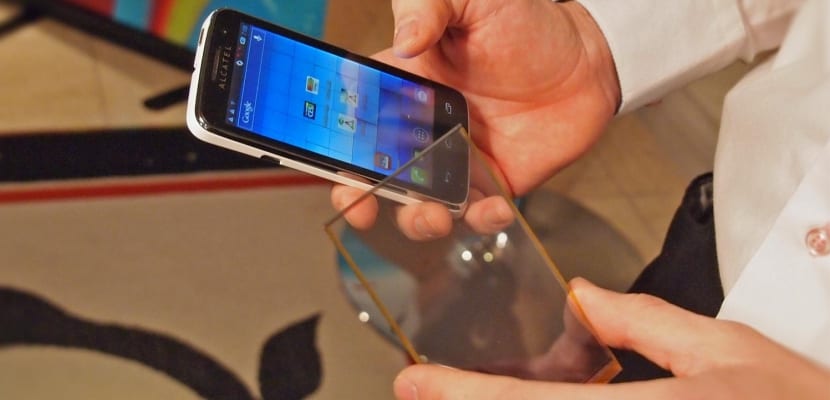
Since 2011 and with the media appearance of WYSIPSWe hear about transparent solar cells for many applications, solar glazing, mobile phone screen, vehicles.
The main technologies of transparent solar cells
In March 2011, the French company SunPartner Technologies presented for the first time WYSIPS, (what you see is photovoltaic surface), a transparent photovoltaic cell also called film PV transparent, which is supported by a plastic film and an organic compound.
This cell absorbs a part of the spectrum infrared and ultraviolet as well as a part of the visible spectrum for a yield ranging from 7 to 9%. However, the part of the visible spectrum absorbed reduces the transparency of the film to 70%. A few years later, to respond to the transparency requirements of mobile phone manufacturers, WYSIPS made its technology evolve, its cells have a transparency of 90% but on the other hand they have a lower yield between 2 and 3%.
All the cells photovoltaic they are arranged in very thin bands on the whole of the film and are masked for an optical effect caused by semi-cylindrical lenticular surfaces, these are flexible and transparent solar panel cells in a mobile phone smartphone.
The advantages of the transparent solar cell
- Almost perfect integration.
- Multiple applications.
- Flexible solar cell.
Drawbacks
- Transparency between 70 and 90%.
- Cost still too high.
Throughout the summer of 2014, a new advance in the field of cells photovoltaic Transparent came to us from the University of Michigan in the United States. A team of researchers managed to manufacture a cell PV close to glass and totally transparent. Indeed, it only absorbs light in the infrared field.
Operating principle
Un polymer organic allows the surface in question to absorb infrared radiation. This material emits this infrared radiation in the form of luminescent emission captured by photovoltaic cells located on the edge of the glass.
At the moment, this one has a performance 1%, but should soon reach 5%, once the cell is optimized. Furthermore, it would have a relatively low industrial scale production cost.
Advantages
- Perfect integration.
- Multiple applications.
- Reasonable cost if it is industrialized.
Drawbacks
- Performance not too high.
- Little technological maturity.
- Rigid cell.